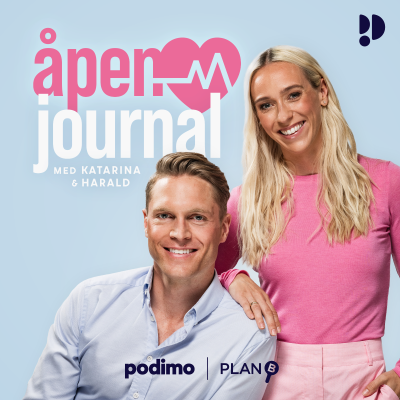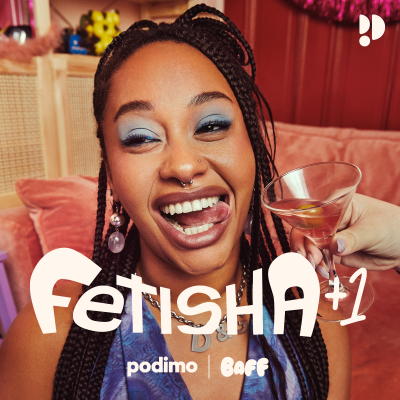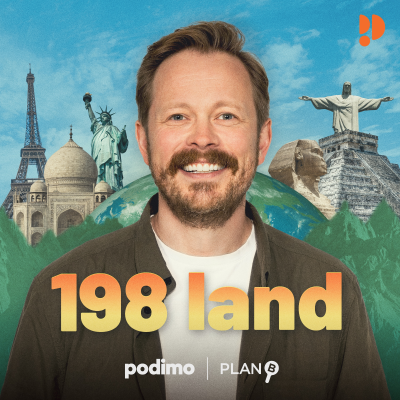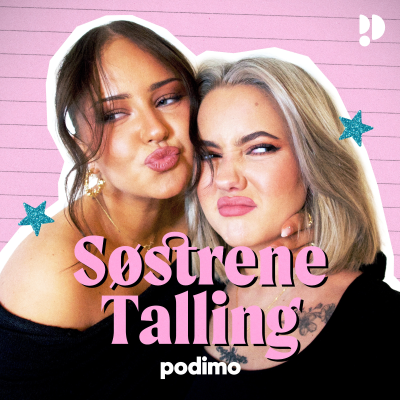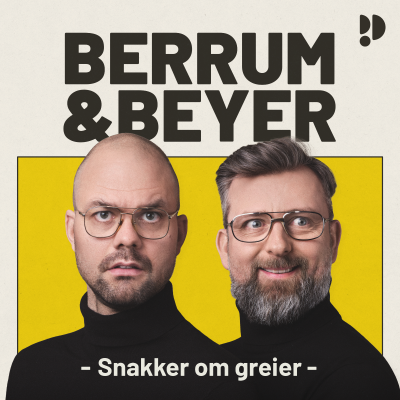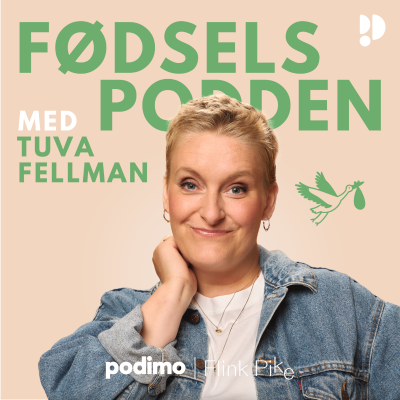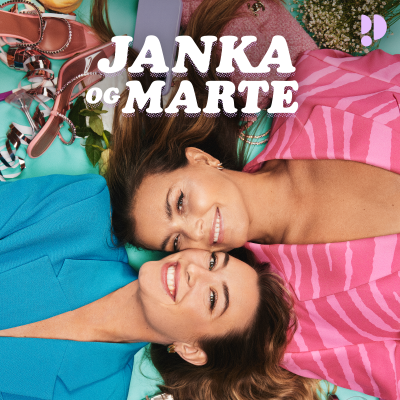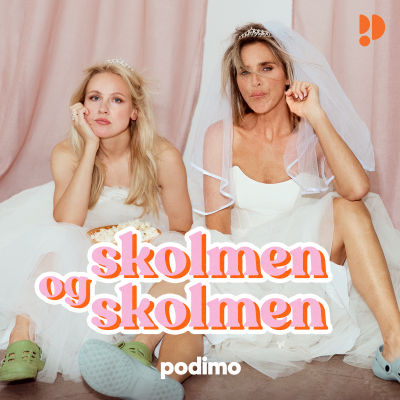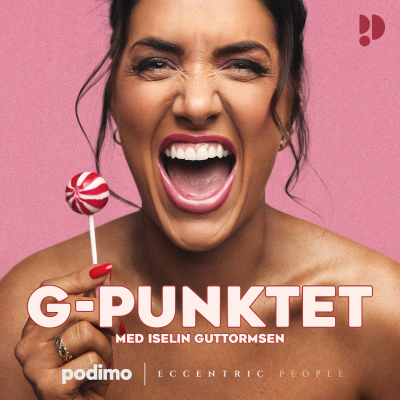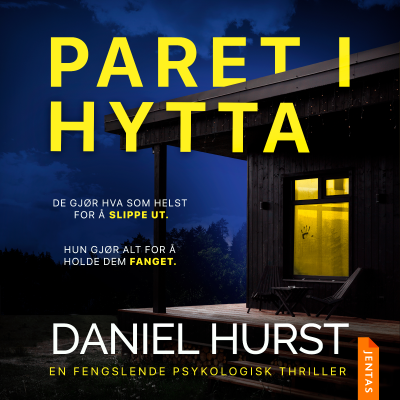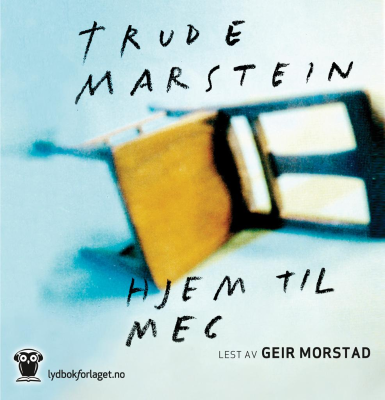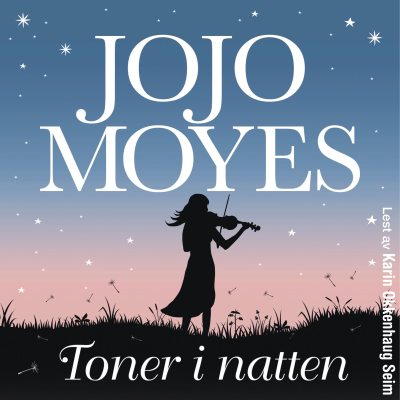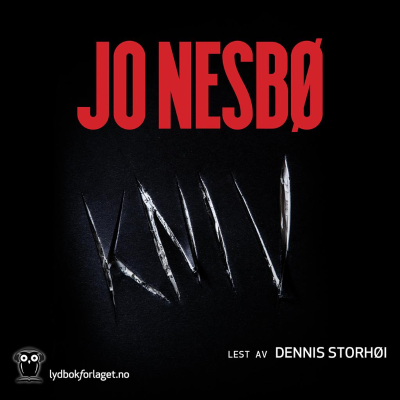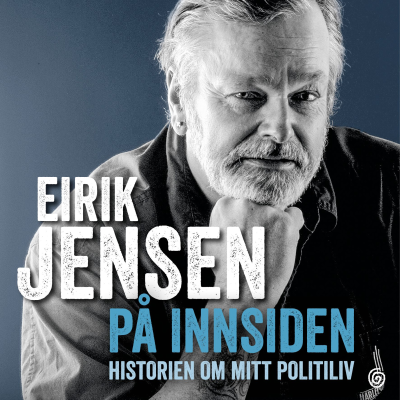Dette tilbudet har dessverre utløpt
Start en gratis prøveperiode under i stedet
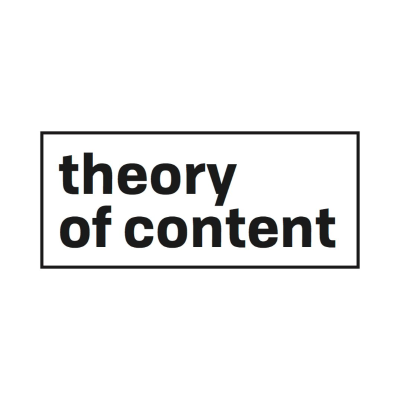
Theory of Content
Podkast av Joshua Unseth, Amber Bracegirdle
Theory of Content is a podcast about why we make content. Amber Bracegirdle is a founder at Mediavine Publisher Network. They sell ads into the inventory of thousands and thousands of bloggers. Joshua Unseth is the in-house director of marketing for Alarm Grid. Together they discuss how they go about thinking about making content.
Tidsbegrenset tilbud
3 Måneder for 9,00 kr
Deretter 99,00 kr / MånedAvslutt når som helst.
Alle episoder
81 EpisoderWelcome back to Theory of Content! This week, Joshua Unseth is joined by Nora Schlesinger to answer even more of your Face bag questions, and of course, do some obligatory TOC Beanie Babies talk. Nora starts the episode off strong, talking about some COVID prevention theories. The two discuss the effectiveness of glasses all the way to the effectiveness of bunkers to prevent the virus. Joshua and Nora compare their swearing habits before getting to the down and dirty topic of… you guessed it: Beanie Babies. Joshua recounts how he would sell them as a kid, and (spoiler alert!) he made $600. The Face bag section of today’s episode begins with a bit of feedback. Tamara emailed in about some comments made in previous episodes about blogging during the pandemic. She points out that while Joshua had said that the stay-at-home orders gave bloggers a lot of time to optimize their blogs, some blogs are not very easily able to flourish during COVID. For example, travel blogs took a substantial traffic hit last year. The hosts point out that this is very true, and that not all the advice given on this podcast can apply to each and every blogger. What is important to remember though is that bloggers must find ways to bring people to their site no matter the state of the world. Joshua advises to put out content that is about COVID and traveling. For instance, you could make a post about how to fly safely during the pandemic. Overall, what to take from this section is that TOC offers advice to the blanket profession of blogging. However, some niche content varies in audiences and advertisers, so take the advice given but adapt it to your needs. Speaking of adapting, Nora begins talking about how to adapt your site for different social media sites. This all starts when the two get into the hot topic of the Clubhouse app. They talk about how they’ve noticed it pulling people away from daily life, but they also point out the benefits it can have for podcasters. Nora suggests that if you have the time, sure, check out new social media platforms for your site. However, if you don’t have the time, you have to plan out your business goals and see if a certain platform will truly benefit your business. Don’t just follow trends to follow them, make them work for you! Lastly, Joshua and Nora take a question about mislinked pages. Nora outlines what high-intensity link building is, and Joshua talks how he is not a big fan of it. However, how he touches on reasonable ways to link building. Some of these involve reaching out to a site owner to change a mislinked page, just like Jessica did! Thank you for tuning into Theory of Content this week! Be on the lookout for new episodes coming soon, and in the meantime check out last week’s episode with even more Face bag questions. ================================== Tamara of we3travel.com Welcome back, I was glad to see Theory of Content pop up in my podcast player this week. However, I have to provide a little feedback. I know Mediavine and Theory of Content have both been very focused on food and lifestyle blogs, but the discussion about how great 2020 was for bloggers was really tone deaf for other types of publishers. As a travel blogger, I have seen my traffic demolished in Spring 2020 and then slowly claw its way back to 40-50% of what it was pre-COVID. Revenue took additional hits with most travel sponsored campaigns drying up due to lack of budget and affiliate programs being shut down even for the few tours and hotels our visitors are booking. And while Q4 is great for ad RPMs, not everyone sees a traffic surge in Q4. Most travel bloggers I know see an uptick in traffic that begins on December 26 and steadily increases to peak in July before it then dips dramatically. In a typical year I’ll make more in July than December, even with the difference in RPM, because of the significantly higher traffic in July. I also don’t know how many people are really unemployed and saving money because they are making so much from their unemployment checks. People I know who have been impacted by COVID are struggling to find work and taking a serious hit to their income. Your audience isn’t monolithic and it would be nice to hear you acknowledge that fact in these types of discussions. ================================== Hi TOC team! So glad the episodes are back! I have a request for you. My blog was mentioned on episode 59. In the show notes, the link to my blog goes through Facebook first. Is there anyway to update that to my direct blog link and change the anchor text? So I’m requesting A Utah Lifestyle Motherhood Blog…. be changed to loveloveloveblog.com [http://loveloveloveblog.com/]. Thank you so much! Jessica The post Ep 070 – FaceBag with Special Guest Nora Schlesinger [https://theoryofcontent.com/ep-070-facebag-with-special-guest-nora-schlesinger/] appeared first on Theory of Content [https://theoryofcontent.com].
Welcome back to Theory of Content! Continuing on from last week, Joshua and Rebecca are still tackling all your facebag questions. Well… actually they’re tackling all of loyal listener Ellen’s questions today. The two hosts tackle Ellen’s mega email on today’s episode to uncover just why bloggers might experience substantial dips in traffic. Before they spill all their SEO wisdom, Joshua has to air out what he hates about Rebecca’s site. What does he hate so much? The fact that he is actually maddened by the outrageous millennial content that Rebecca posts just to showcase the outrageousness. Next, he talks about how Rebecca used the Gamestop stock phenomenon to boost traffic on her site. After Rebecca posted a link on the Wall Street Bets reddit to an article she wrote about the event, she noticed a surge in traffic. Joshua points out how Reddit can be used to boost traffic. However, redditors aren’t a good source of monetization, because many of them turn ad blockers on. Moving into the focus on this episode, the two hosts begin to make their way through Ellen’s email. The subject of Ellen’s email is about a substantial drop she experiences in her content annually. Joshua points out that this is not out of the usual for holiday-centric content. It is important to not only produce seasonal content. If you dig into your site analytics and see that your top performing posts are seasonal specific, that’s great, but you want to make sure you have content that will draw traffic all year long. Next, Joshua and Rebecca answer Ellen’s question about when to create mega posts. Joshua recognizes that mega posts are great and can do exceptionally well SEO wise. However, if you have a newer blog you may want to focus on the quantity of posts. If you split a mega post into a bunch of smaller posts, each individual post will be less likely to drastically bump your site around on Google rankings. Of course, this is all site specific, so analyze your pages to see whether a mega post or numerous smaller posts are best for you. Some tools the hosts offer to help analyze your site are Semrush and Webmaster Tools. These two resources will allow you to see what you’re ranking for that you might not even have explicit content for yet. This can help you create a content plan about which topics you want to cover in your future posts. Rebecca adds that the posts she created using this content strategy are some of the best ranking pages at Let’s Eat Cake. ================================== Ellen from https://artsyprettyplants.com/ [https://artsyprettyplants.com/]Start of ep 69 First in Facebook she said: This makes me very happy to hear. This podcast has been the best SEO education. I was so afraid it wasn’t coming back. I’ll be emailing a bunch of questions. * First, i want to talk about email for this one. Let’s discuss the process of using a domain email, and how to set it up. It’s easy. * Hi guys, I’m soooo, glad you have returned. I just want you to know that I started listening to your podcasts late summer and at the same time as I started taking a highly recommended SEO course which is very good, but I have learned even more from you! I love utilizing Search Console to help plan my future content as well as for updating old content, so thank you for all the podcasts you have done on that. Sorry for this long email- I am more than happy to come on the show if it’s easier to go through, than answering it in the Facebag. Please help. In recent months, I worked on a robust content plan that extends from now through June. I really need to be ahead of the game, because my content is seasonal, seeing the highest traffic numbers and growth in the spring. I would really love some reassurance that I’m on the right path before I waste my opportunity during my best traffic growth period. I’m a DIY blogger who focuses on concrete crafts and outdoor decor/yard projects. The website is 3 years old, so there’s not tons of year over year data, plus the first 2 years I was only able to work on it part-time. However, the data that I do have has been consistent in that it has that dramatic increase in spring, with a noticeable drop right after Memorial day and then a continued decline, though moderated, through the rest of the year. This past fall, when I started digging into SEO, my organic growth grew to its highest level ever, but then on 10/27, I had a loss of more than half my organic traffic that didn’t recover. This month is getting better because my organic traffic is showing a slow but steady increase, but this is what I would start expecting now seasonally. I’d like to know if this drastic drop is something I did. This has me concerned that I’m not applying what I’ve learned about SEO properly, or that I may be misinterpreting the data. My method for developing a content plan has been to find keywords/queries in Google Search Console that have high impressions and are a recurring theme. I then use those keywords to create cluster content with. For the queries Google seems to want to rank me for, I am doing one of two things. Some of those queries are for my existing, what I call mega-posts (nucleus of the cluster). So I’m either updating those posts with even more information (answering People Also Ask questions, etc.) and then creating posts that will be supporting content. Or if a mega-post doesn’t already exist, then I’m writing one for that keyword and create more supporting clusters and then do some mad linking between all of them. I hope I’m making sense. For instance, my DIY concrete stepping stones post gets tons of impressions but relatively low clicks compared to impressions. It is a tutorial on making concrete stepping stones that look like natural stone, the post also has a YouTube video tutorial that goes along with it. I have a high discrepancy between impressions and clicks and believe the main reason is because of searcher intent. This is something I feel like I run into a lot with concrete-related posts. So for the stepping stones, I believe the search intent is to find out how much they cost to buy and have installed, what types of stone options there are, etc. With this, my strategy was to write a mega post on stepping stones with all of that type of information- buying vs selling, costs, labor difficulty, types, colors, etc. My next step is to create the rest of the cluster by writing a couple of other types of stepping stone tutorials. And then do some mad linking between them to support both my initial tutorial, as well as the mega-informational one. By the way, since both posts are quite robust, can I make these both cornerstone posts? Right now, only the informational one is. I’m using the same cluster method for a handful of recurring/high impression queries- ie; cinder block planters, driftwood planters, bird baths, large concrete planters, lightweight concrete planters and making silicone molds for concrete. Am I interpreting my keywords correctly? (Yes, I know about the Dollar Tree keywords too-which is unrelated to my niche, but I am also doing some more of those). Am I headed in the right direction, or do I need to rework my whole content plan? Should I be worried about what happened to my traffic this fall? I so appreciate your help with this. FYI- I can provide more information on the traffic drop, reports, or anything else. Just let me know what you need. Best, Ellen Thank you so much for tuning into Theory of Content this week. Be on the lookout for new episodes coming soon. In the meantime, make sure you didn’t miss last week’s episode where Joshua and Rebecca also answered listeners’ questions. The post Ep 069 One Question, Many Answers [https://theoryofcontent.com/ep-069-one-question-many-answers/] appeared first on Theory of Content [https://theoryofcontent.com].
Welcome back to Theory of Content! Rebecca Swanner joins Joshua Unseth once again this week. The two are here to answer some of the many questions you listeners submitted over the weeks about all your SEO and content inquiries. The pair begin the episode with a debate on who the best TOC host is/has been, and they’re really all competing for second place because we already know Amber is #1. Joshua discusses the new phenomenon that is the Clubhouse app. He explains how it might be useful for the Theory of Content community, but he just can’t see himself putting it together. Rebecca lets listeners in on her experience with the Gamestop stock world, and assures everyone that she did not get scathed too badly. Rebecca’s love of vintage cakes takes the hosts into a conversation about social media usage for businesses. Joshua explains how businesses don’t need to be present on every social media platform, only the ones that fit their needs. Rebecca adds on about how it is hard for lifestyle brands to establish themselves amongst more niche content on social media sites. Starting with the listener questions, Rebecca and Joshua answer a question about making Youtube videos for blogs. Joshua reminds listeners that he has not forgotten about the promise he made to make a whole episode on Youtube content. However, in the meantime, he gives a few tips on how to push into the Youtube sphere. First, he suggests assessing your content and seeing whether it fits a video platform (DIYs and teaching content are especially great). Next, he suggests just giving it a go if your content is not deemed potentially controversial. The next question gives Rebecca her time to shine. To answer the question, about core web vitals and how they can lead to poor scores, Rebecca has to explain a few things first. She defines the largest contentful paint as the amount of time it takes a user to see the largest content on the first screen load of a site. Next, she defines first input delay as the amount of time it takes a user to interact with a site. Easy ways to improve these two core web vitals are to optimize images and use her suggested programs to up site speed. However, the last core web vital is the trickiest to fix. Cumulative layout shift (CLS) is when a site moves without user interaction. This is often due to issues with ads, and many of the solutions mean removing ads and therefore removing monetization. Rebecca hopes that there will be more information coming out soon on how to fix this issue, but in the meantime, she suggests focusing on optimizing the other two web vitals. To finish off the episode, the hosts take a question about category pages. Joshua stresses that category pages should be unique and the same recipes should not be following into the same categories. This could make Google think you have duplicate pages when you really don’t. To prevent this issue, Rebecca suggests to not create a ton of categories right at the start of your blog. Instead, start with a few and as those become too saturated, create appropriate break off categories. The post Ep 068 Video and Vintage Cakes [https://theoryofcontent.com/ep-068-video-and-vintage-cakes/] appeared first on Theory of Content [https://theoryofcontent.com].
Welcome back to Theory of Content! This week is a bit different and Joshua Unseth is joined by Eric Hochberger, the CEO of Mediavine. Eric is here to take the SEO conversation away from COVID and towards the future by discussing Mediavine’s upcoming projects. Eric starts off the episode by explaining the new importance of web stories on Google. These may not seem that important to IOS users, but that is because they are only seen on Google and Android mobile devices. These web stories allow bloggers to pop up in Google Discover, which is curated to users’ preferences, instead of leaving bloggers to solely rely on rankings in Google search. Next, Eric offers some tips on how to optimize SEO for Google web stories. He suggests that bloggers make a regular companion post for each story, but to also create a landing page with all the stories, so web crawlers can easily crawl the stories. Eric finishes off the topic of stories, by giving an overview of their cons. For instance, stories don’t monetize as well. Joshua prompts a switch in the conversation to focus on the future of Mediavine. Eric begins by talking about Trellis. Trellis is a tool designed to optimize WordPress sites, and Joshua describes it as the most important thing going on for bloggers right now. Eric jumps to the next project that Mediavine has going on which is their change in adtech. Their new server to server program will source information to the newly built Mediavine exchange server. This switch will increase the speed of ads on Mediavine sites which will in turn increase viewability of ads. The last topic the duo cover is the death of the 3rd party cookie. This current hot topic in the ad world has to do with the push to a privacy centered world. Web users now can consent to getting specialized ads and in turn having their information shared around. The issue with this is that as personalized ads decrease so does the monetization of ads. Joshua closes off the episode by assuring bloggers that Mediavine has their back. It can be scary when Google changes the means of monetization without bloggers’ consent, but Mediavine is there to optimize ads and monetization through whatever Google throws at the algorithm. The post ep 067 Hanging out with Mediavine CEO Eric Hochberger [https://theoryofcontent.com/ep-067-hanging-out-with-mediavine-ceo-eric-hochberger/] appeared first on Theory of Content [https://theoryofcontent.com].
After a long – and we mean LONG – hiatus (sorry loyal listeners), Theory of Content is back and better than ever! Joshua Unseth is joined once again by Rebecca Swanner, the owner of Let’s Eat Cake [https://www.letseatcake.com/], to answer all your burning mailbag questions. Joshua begins the episode with an apology and an explanation. 2020 was a wild year and life got in the way of creating new TOC content after August. Joshua walks Rebecca through his hectic year. He begins with his fast-planned wedding that was organized in September and took place in October. Next, he recounts the many times he found himself having to quarantine due to COVID exposure, and how frustrating all of that was. This conversation leads the hosts to talk about blogging in the age of COVID. They explain why it presents a good opportunity to focus on building traffic for the site instead of focusing on revenue gains. Ad revenue is at a low right now (COVID + Q1 payouts = no good). Bloggers should focus their attention on building traffic, so that when COVID is hopefully over by Q3 or Q4 of 2021, they can monetize their newly grown audience. This is a good practice in general, building traffic before monetization, because advertising can anger the audience and it won’t lead to substantial profit until there is a substantial audience. Mailbag begins with a question about using the same video clips in multiple videos on Youtube. Joshua instantly recommends the tool Tube Buddy [https://www.tubebuddy.com/]. Tube Buddy is essentially an SEO tool that specifically helps with Youtube video rankings on Google and within the app itself. The hosts also point out that if you enable closed captioning, Google will be able to crawl a Youtube video as though it were a blog post. This can help push your videos to the top of Google, if they are SEO optimized. This also allows bloggers to reuse video clips in multiple videos. As long as you change the audio and closed captioning over the clip, Google will read the video as new content. The last mailbag question is about what to do when an alternate dev page blocks Google from indexing cornerstone content from your site. Joshua offers a tip to help bloggers identify issues like this. If you perform a Google search query on your site, you will be able to tell every place in the domain that a certain word or phrase is used. Rebecca adds that this can be beneficial for internal linking. The fix to the initial issue lies in the robots.txt file, which can easily be accessed on WordPress sites. This file tells web crawlers which pages to crawl and which not to crawl. If the dev site is marked as “uncrawlable” in the robots.txt file, the page you wish to be crawled should take priority. Expanding on SEO optimization, Joshua makes one last closing statement. He tells listeners to not get caught up in diagnostic tools and trying to fix every page on your site. Like Rebecca says, focus on making new content. Thank you for tuning into Theory of Content in the new year! Be on the lookout for new episodes soon, 2021 is the year to make your blogs the best they can be! ====================================== Facebage 1: Ellen McLean – artsyprettyplants.com I’ve become pretty addicted to this great podcast. I didn’t hear anything about the podcast being on hiatus. Does anyone know when we can expect it to come back? I think the last episode they have is late August. ====================================== Facebag: Jessica Anderson – www.cutesycrafts.com [http://www.cutesycrafts.com/] Hi Theory of Content! Just finished listening episode 51, where you asked for YouTube questions. You’ve inspired me to start putting my face in videos and not just my hands. I think the combination of having to change up camera angles and do my hair and makeup for the day as been the drawback for me (boys have it so easy!) Anyway… I make craft and embroidery tutorials on my blog and YouTube channel, Cutesy Crafts. I really started having success on YouTube when I posted embroidery stitch-alongs, where I would show each step of how to do an embroidery project in a separate video and compile them into playlists. In each video, I show the finished piece, talk about which part we’re working on, and then show how to do the stitch. I have moved away from these, as I feel they aren’t very good for SEO. There are only so many embroidery stitches that make up each project, and I was teaching the same stitches over and over again. In fact, when it got to the stitching part in a couple videos, I just stated cutting in old video footage of me doing that stitch (example: https://youtu.be/wm9MXRaoQ4k [https://youtu.be/wm9MXRaoQ4k]). I’ve had a few subscribers ask for more like those, but I’m wondering if it would hurt me to have several videos with similar titles and content, especially if they have old video footage cut in. New, different kinds of content do MUCH better in search, but I want to keep my subscribers happy too. Also, I went to a YouTube class about a year ago, and the presenter said that YouTube looks at how many views you get immediately after uploading a video, so you should never upload a video unless you are ready to publish immediately. Along the same lines, she said if you ever change the title or words in the description of a video, that ranking kind of resets and you lose any momentum that the video had. This seemed kind of like superstition to me, but I wanted to see if there was any truth to it. I’m planning on going back and adding more information and links to my video descriptions. I won’t be changing titles or words in the first paragraphs of my successful videos, just adding more information below. I’m guessing that it’s the same as a blog post and if it’s ranking well, I shouldn’t try to fix it. ❤ [https://lh4.googleusercontent.com/VcHSXMN2t2kqXB3LB7bsF0DOsBITIpAPLrqc0cT6P5zHttOxcYpYy9rrQZok5JkpK92I1MT6eqOIKJ7xsQTkx9F7PwXZ_wnsPr5uBHWCYdbhPYPPPE7Zgkt-u6GkGSkCH72Aq4vh]Thank you for all of the work you do! I’ve seen tremendous success implementing your strategies on my blog. ====================================== Facebook 2: Jim from http://destination-bbq.com/ [http://destination-bbq.com/] New ToC listener. Binging now…great show. Has me looking at GSC. Noticed a page which I consider “cornerstone content” that is not indexed by Google. (https://destination-bbq.com/sc-bbq-hash [https://destination-bbq.com/sc-bbq-hash]). Initially, the error mentioned it wasn’t indexed because of a page redirect. I requested indexing. Today, it is not indexed not because of an error, but because of “Alternate page with proper canonical tag.” I don’t know where an alternate page would be and the page doesn’t seem to rank. Looking further, I see that 12k posts are excluded for similar reason. I assume most of them are appropriately marked? However, what do you do for those like this which should not be excluded? He followed up a few days later with the following email: Follow up: So, it looks like https://destination-bbq.com/sc-bbq-hash/ [https://destination-bbq.com/sc-bbq-hash/] is the indexed page…with the / at the end. Not without. Guess I didn’t realize there was a distinction. Also, testing in Moz, I got this message, which confirms the original “page redirect” message: You entered the URL https://destination-bbq.com/sc-bbq-hash [https://destination-bbq.com/sc-bbq-hash] which redirects to destination-bbq.com/sc-bbq-hash/ [http://destination-bbq.com/sc-bbq-hash/]. Click here to analyze destination-bbq.com/sc-bbq-hash/instead [http://destination-bbq.com/sc-bbq-hash/instead]. So, 1) why the redirect in the first place, and 2) why is such a comprehensive piece on the subject not in — at least — the first 11 pages of Google using sc bbq hash as the search term? TIA The post Ep 066 We Are Back [https://theoryofcontent.com/ep-066-we-are-back/] appeared first on Theory of Content [https://theoryofcontent.com].
Dette tilbudet har dessverre utløpt
Start en gratis prøveperiode under i stedet
Tidsbegrenset tilbud
3 Måneder for 9,00 kr
Deretter 99,00 kr / MånedAvslutt når som helst.
Eksklusive podkaster
Uten reklame
Gratis podkaster
Lydbøker
20 timer i måneden
